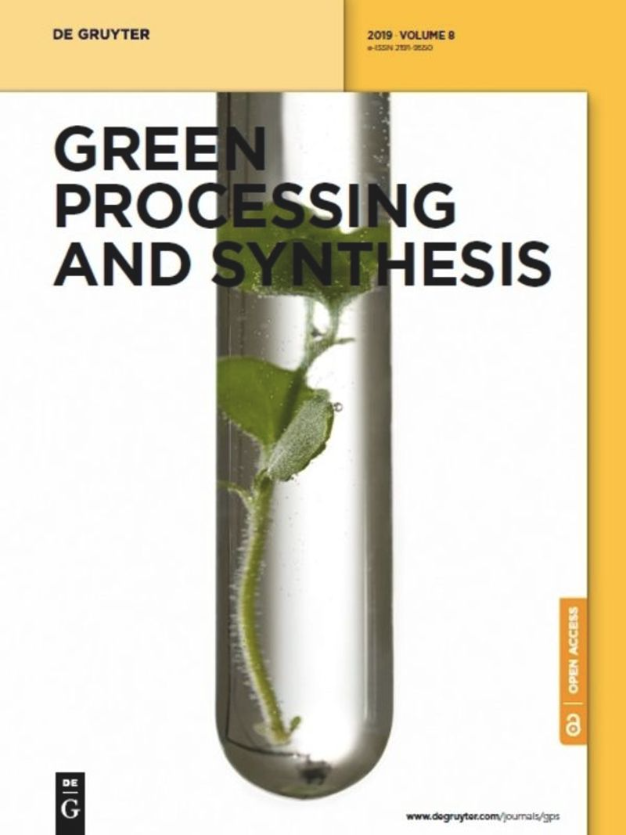Phosphorus removal by iron–carbon microelectrolysis: A new way to achieve phosphorus recovery
IF 3
4区 工程技术
Q2 CHEMISTRY, MULTIDISCIPLINARY
引用次数: 0
Abstract
Abstract Iron–carbon microelectrolysis was employed to remove phosphorus in this study. The efficiency, mechanism, influence factors, and feasibility of actual wastewater were investigated. The results showed that iron–carbon microelectrolysis had an excellent phosphorus removal ability. When the initial concentration of PO 4 3 − {\text{PO}}_{4}^{3-} –P was 19.44 mg·L−1, after 120 min reaction time, the remaining PO 4 3 − {\text{PO}}_{4}^{3-} –P in wastewater was 4.65 mg·L−1, and the removal rate was 76.05%. The precipitate formed in the reaction was mainly ferric phosphate (FePO4), which had a high recovery value. There was a linear correlation between initial phosphorus concentrations and phosphorus removal velocity. As to actual wastewater, 88.37 ± 0.44%, 89.78 ± 1.88%, and 94.23 ± 0.16% phosphorus removal rates were achieved in the influent of municipal wastewater treatment plant, effluent of secondary sedimentation tank, and actual high salinity wastewater, respectively, after 120 min reaction time. This study provides a new method for phosphorus removal and recovery from wastewater. Graphical abstract Iron–carbon microelectrolysis has an excellent phosphorus removal ability. The precipitate formed in the reaction was mainly ferric phosphate (FePO4) which had a high recovery value.铁碳微电解除磷:一种实现磷回收的新途径
摘要本研究采用铁碳微电解法去除磷。对实际废水的处理效率、机理、影响因素及可行性进行了探讨。结果表明,铁碳微电解具有良好的除磷能力。当PO 4.3−{\text{PO}}_{4}^{3-} - p初始浓度为19.44 mg·L−1时,反应时间120 min后,废水中剩余PO 4.3−{\text{PO}}_{4}^{3-} - p为4.65 mg·L−1,去除率为76.05%。反应生成的沉淀物主要为磷酸铁(FePO4),具有较高的回收价值。初始磷浓度与除磷速度呈线性相关。在实际废水中,经过120 min的反应时间,城市污水处理厂进水、二沉池出水和实际高盐度废水的除磷率分别为88.37±0.44%、89.78±1.88%和94.23±0.16%。本研究为废水除磷和回收提供了一种新的方法。铁碳微电解具有优异的除磷能力。反应生成的沉淀物主要为磷酸铁(FePO4),具有较高的回收率。
本文章由计算机程序翻译,如有差异,请以英文原文为准。
求助全文
约1分钟内获得全文
求助全文
来源期刊

Green Processing and Synthesis
CHEMISTRY, MULTIDISCIPLINARY-ENGINEERING, CHEMICAL
CiteScore
6.70
自引率
9.30%
发文量
78
审稿时长
7 weeks
期刊介绍:
Green Processing and Synthesis is a bimonthly, peer-reviewed journal that provides up-to-date research both on fundamental as well as applied aspects of innovative green process development and chemical synthesis, giving an appropriate share to industrial views. The contributions are cutting edge, high-impact, authoritative, and provide both pros and cons of potential technologies. Green Processing and Synthesis provides a platform for scientists and engineers, especially chemists and chemical engineers, but is also open for interdisciplinary research from other areas such as physics, materials science, or catalysis.
 求助内容:
求助内容: 应助结果提醒方式:
应助结果提醒方式:


